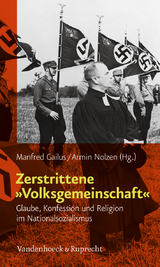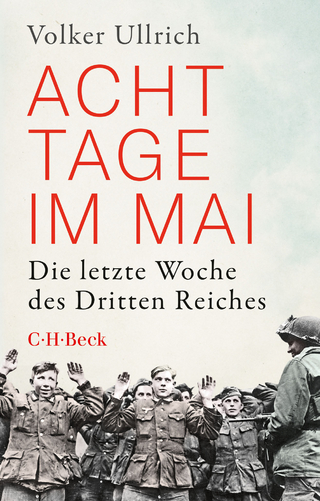Zerstrittene »Volksgemeinschaft«
Glaube, Konfession und Religion im Nationalsozialismus
Seiten
2011
Vandenhoeck & Ruprecht (Verlag)
978-3-525-30029-9 (ISBN)
Vandenhoeck & Ruprecht (Verlag)
978-3-525-30029-9 (ISBN)
Woran glaubten die Deutschen im »Dritten Reich«?
In 1933 more than 95% of the German population were members of one of the two major Christian religions. This picture did not change dramatically throughout the entire 12-year reign of the "Third Reich." This is all the more surprising in light of the fact that at the same time a large proportion of the German population also belonged to some Nazi organization. Apparently during this period, on some intellectual-religious level, these two irreconcilable roles of being a politically devout National Socialist and a conventional Christian were able to coexist side by side. This volume examines which forms this coexistence took on, the changes it experienced and the conflicts it created. It also explores the question whether the religious situation of that day and age can be reduced solely to a "struggle between Church and State" of the two major religious faiths.
In 1933 more than 95% of the German population were members of one of the two major Christian religions. This picture did not change dramatically throughout the entire 12-year reign of the "Third Reich." This is all the more surprising in light of the fact that at the same time a large proportion of the German population also belonged to some Nazi organization. Apparently during this period, on some intellectual-religious level, these two irreconcilable roles of being a politically devout National Socialist and a conventional Christian were able to coexist side by side. This volume examines which forms this coexistence took on, the changes it experienced and the conflicts it created. It also explores the question whether the religious situation of that day and age can be reduced solely to a "struggle between Church and State" of the two major religious faiths.
Dr. Olaf Blaschke ist Wissenschaftlicher Assistent (Neuere und Neueste Geschichte) an der Universität Trier.
Dr. phil. Dagmar Pöpping ist wissenschaftliche Mitarbeiterin bei der Forschungsstelle für Kirchliche Zeitgeschichte mit Sitz an der LMU München.
Prof. Dr. Manfred Gailus lehrt Neuere Geschichte am Zentrum für Antisemitismusforschung der Technischen Universität Berlin. Er hat zahlreiche Bücher und Aufsätze über die Geschichte des Protestantismus seit dem Kaiserreich verfasst.
Armin Nolzen ist Historiker und Redakteur der Reihe »Beiträge zur Geschichte des Nationalsozialismus«.
| Erscheint lt. Verlag | 14.9.2011 |
|---|---|
| Co-Autor | Olaf Blaschke, Beth A. Griech-Polelle, Matthew D. Hockenos, Horst Junginger, Marit Petersen, Dagmar Pöpping, Kevin P. Spicer, Dietmar Süß |
| Zusatzinfo | mit 10 Abb. |
| Verlagsort | Göttingen |
| Sprache | deutsch |
| Maße | 128 x 210 mm |
| Gewicht | 456 g |
| Themenwelt | Sachbuch/Ratgeber ► Geschichte / Politik ► 20. Jahrhundert bis 1945 |
| Geschichte ► Allgemeine Geschichte ► 1918 bis 1945 | |
| Religion / Theologie ► Christentum ► Kirchengeschichte | |
| Schlagworte | Deutschland/Nationalsozialismus • Deutschland /Religion • Drittes Reich / 3. Reich; Religion • Drittes Reich; Religion • Kirchengeschichte • Nationalsozialismus (Ideologie) |
| ISBN-10 | 3-525-30029-8 / 3525300298 |
| ISBN-13 | 978-3-525-30029-9 / 9783525300299 |
| Zustand | Neuware |
| Haben Sie eine Frage zum Produkt? |
Mehr entdecken
aus dem Bereich
aus dem Bereich
ein Psychologe erlebt das Konzentrationslager
Buch | Hardcover (2024)
Kösel (Verlag)
CHF 30,80
Mythos „Stauffenberg-Attentat“ – wie der 20. Juli 1944 verklärt und …
Buch | Hardcover (2024)
Goldmann (Verlag)
CHF 33,55
die letzte Woche des Dritten Reiches
Buch | Softcover (2023)
C.H.Beck (Verlag)
CHF 22,40




